Studi ermeneutici su simbolo, mito e ‘modernità dell’antico’ nella Letteratura italiana e nelle Arti dal Rinascimento ai giorni nostri

Studi ermeneutici su simbolo, mito e ‘modernità dell’antico’ nella Letteratura italiana e nelle Arti dal Rinascimento ai giorni nostri
Dal 19 December 2016 al 20 December 2016
Milano
Luogo: Università Cattolica del Sacro Cuore
Indirizzo: Largo A. Gemelli 1
E-Mail info: ida.villa@unicatt.it
Sito ufficiale: http://convegni.unicatt.it/ermeneutica-simbolo-mito-e-modernitadellantico
L’«ermeneutica della “modernità dell’antico”» è un filone ancora pressoché pionieristico negli studi accademici della Letteratura italiana e delle Arti. Il suo intento prioritario è quello di arrivare a scoprire il significato recondito di opere letterarie e artistiche laddove gli altri approcci interpretativi si sono rivelati fallimentari o insoddisfacenti quanto agli esiti.
La sua peculiarità è quella – una volta acquisiti tutti i risultati degli studi filologico-storico-critici letterari e artistici – di avvalersi delle fonti antiche della mitologia e della religiosità pagana, nonché dell’eresiologia, allo scopo di servirsene come di risolutive, benché a tutta prima insospettate, chiavi interpretative di opere letterarie e artistiche che sono state sì realizzate nel mondo moderno, dell’era cristiana, eppure sono state sapientemente concepite dai loro autori (di fatto calati nel ruolo di antichi redivivi, nell’era moderna, ovvero di cripto-pagani in incognito) come degli enigmi eruditi costruiti con i materiali attinti a quelle stesse fonti antiche della religiosità pagana o dell’eresiologia; e ciò contando sul fatto che quelle fonti e quelle concezioni da esse veicolate sono state per secoli – e lo sono tuttora – pressoché ignorate dalla quasi totalità dei “lettori comuni” e non solo, poiché per lo più sguarniti di competenze interdisciplinari spazianti dalla letteratura o dall’arte alle religioni dell’antichità pagana – mediterranea o non mediterranea – e alle eresie del cristianesimo, dell’ebraismo e di altre religioni.
Si tratta pertanto di opere, quelle letterarie e artistiche afferenti alla categoria ermeneutica della “modernità dell’antico” – opere di fatto cripto-pagane –, che sono state dai loro autori in partenza concepite e poi realizzate con una struttura semantica stratificata: una struttura analoga cioè a quella dello scrigno, vale a dire del palinsesto.
Riuscire ad aprire il coperchio dell’opera-scrigno-palinsesto, riuscire cioè a raschiare la scriptio superior delle immagini sia letterarie sia artistiche («Ut pictura poësis»), con l’intento di riuscire ad arrivare a scoprire il significato sapientemente velato nella scriptio inferior dal loro autore – enigmista più o meno in incognito –, è l’obiettivo fondamentale dell’«ermeneutica della “modernità dell’antico”». Che più precisamente si configura come «ermeneutica della “modernità simbolico-mitologica dell’antico”».
Infatti, se concepite con la struttura semantica stratificata dello scrigno-palinsesto, le immagini letterarie o artistiche sono in definitiva dei simboli. “Uno fatto da due”, per l’appunto, è il significato del termine σύμβολον (in Platone, Simposio, 16, 191D). Ne consegue che se un’immagine è un simbolo, significa nel contempo anche altro. È, in altri termini, un’immagine sensibile “abitata” da un’idea, che le conferisce un significato ulteriore – sapientemente dissimulato – e del tutto differente da quello di facciata.
Nel caso di opere letterarie e artistiche concepite nella prospettiva attualizzante della “modernità simbolico-mitologica dell’antico”, se un’immagine è un simbolo, essa è un’immagine sensibile “abitata” da un’idea metafisico-religiosa: più precisamente, “abitata” da un’idea metafisico-religiosa informata a concezioni basate sulle fonti antiche della mitologia, ovvero della religiosità pagana (una mitologia, ovvero una religiosità pagana, tuttavia non omerico-olimpica, bensì preferibilmente anti-olimpica, arcaica, misterica, mediterranea e non mediterranea), oppure dell’eresiologia (sia cristiana sia ebraica, ma non solo).
L’ermeneuta della “modernità dell’antico”, che più precisamente si configura come ermeneuta della “modernità simbolico-mitologica dell’antico”, non è un mero descrittivista-analitico-empirico. Sicché, egli dovrà arrivare a sciogliere nodi interpretativi più o meno annosi mettendo in atto una ricerca di tipo investigativo-deduttivo. E arriverà alla soluzione ermeneutica avvalendosi (dopo comunque aver vagliato tutti i risultati degli studi filologico-storico-critici letterari e artistici, che sono i suoi irrinunciabili pre-requisiti) dei propri peculiari strumenti: quelli cioè rappresentati dalle fonti dell’antichità religiosa pagana o dell’eresiologia, tacitamente confluite nella genesi delle immagini simboliche di quelle opere, nonché dell’idea nascosta da esse veicolata, e che egli dovrà abilmente essere in grado di individuare ai fini della decriptazione del significato nascosto di tali opere.
L’ermeneuta della “modernità simbolico-mitologica dell’antico” considererà quelle fonti dell’antichità religiosa pagana o dell’eresiologia, da lui ravvisate nella scriptio inferior delle immagini di un’opera letteraria o artistica, alla stregua di preziosi indizi ermeneutici. Proprio quelle fonti, infatti, si riveleranno per lui essere le fondamentali – benché insospettate e insospettabili dai più – chiavi ermeneutiche per arrivare prima a intuire e poi a dimostrare l’idea metafisico-religiosa dissimulata (su quelle fonti velatamente imperniata) che informa il significato recondito di opere letterarie o artistiche d’altro canto refrattarie a rivelarlo, proprio perché in partenza sono state dai rispettivi autori intenzionalmente criptate con i temi e le fonti pagane o eresiologiche informanti il simbolo religioso da esse veicolato.
Il Secondo Congresso Internazionale di “Studi ermeneutici su simbolo, mito e ‘modernità dell’antico’ nella Letteratura italiana e nelle Arti dal Rinascimento ai giorni nostri” vuole essere un’occasione per far conoscere alla comunità degli studiosi accademici, nazionali e internazionali, l’approccio ermeneutico della “modernità simbolico-mitologica dell’antico” nella Letteratura italiana e nelle Arti; e nel contempo vuole costituire uno stimolo, in particolare per le nuove generazioni di studiosi, a indirizzare altre ricerche future nella medesima direzione: una direzione ancora pressoché inesplorata dagli studi accademici, ma che lascia prefigurare scenari ermeneutici del tutto inediti, nonché assai interessanti, e non solo per il lettore specialistico, accademico, ma altresì per il “lettore comune”.
SCARICA IL COMUNICATO IN PDF
COMMENTI

-
 Dal 20 December 2025 al 20 April 2026
Caserta | Reggia di Caserta
Dal 20 December 2025 al 20 April 2026
Caserta | Reggia di Caserta
Regine: trame di cultura e diplomazia tra Napoli e l’Europa
-
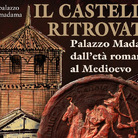 Dal 19 December 2025 al 23 March 2026
Torino | Palazzo Madama - Museo Civico d’Arte Antica
Dal 19 December 2025 al 23 March 2026
Torino | Palazzo Madama - Museo Civico d’Arte Antica
Il castello ritrovato. Palazzo Madama dall’età romana al medioevo
-
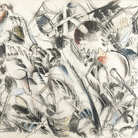 Dal 17 December 2025 al 19 January 2026
Roma | Palazzo della Cancelleria
Dal 17 December 2025 al 19 January 2026
Roma | Palazzo della Cancelleria
De Humana Mensura di Linda Karshan
-
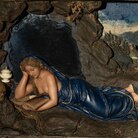 Dal 18 December 2025 al 12 April 2026
Firenze | Gallerie degli Uffizi
Dal 18 December 2025 al 12 April 2026
Firenze | Gallerie degli Uffizi
Cera una volta. Sculture dalle collezioni medicee
-
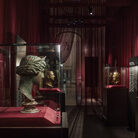 Dal 11 December 2025 al 9 April 2026
Firenze | Museo Archeologico Nazionale di Firenze
Dal 11 December 2025 al 9 April 2026
Firenze | Museo Archeologico Nazionale di Firenze
Icone di Potere e Bellezza
-
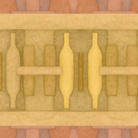 Dal 11 December 2025 al 11 January 2026
Roma | Palazzo Esposizioni Roma
Dal 11 December 2025 al 11 January 2026
Roma | Palazzo Esposizioni Roma
Giorgio Morandi nella Collezione Eni. Un viaggio attraverso la storia culturale del cane a sei zampe e l’eredità di Enrico Mattei


